Plus a Puzzling Piece of Modern Art
In the final posting of this short series of art in the exhibition of works connected with St Francis of Assisi at the National Gallery in London, here is a 14th-century painting in a Western variant of the iconographic style. It shows the saint, with the sunken cheeks of an ascetic, and narrative scenes from his life.
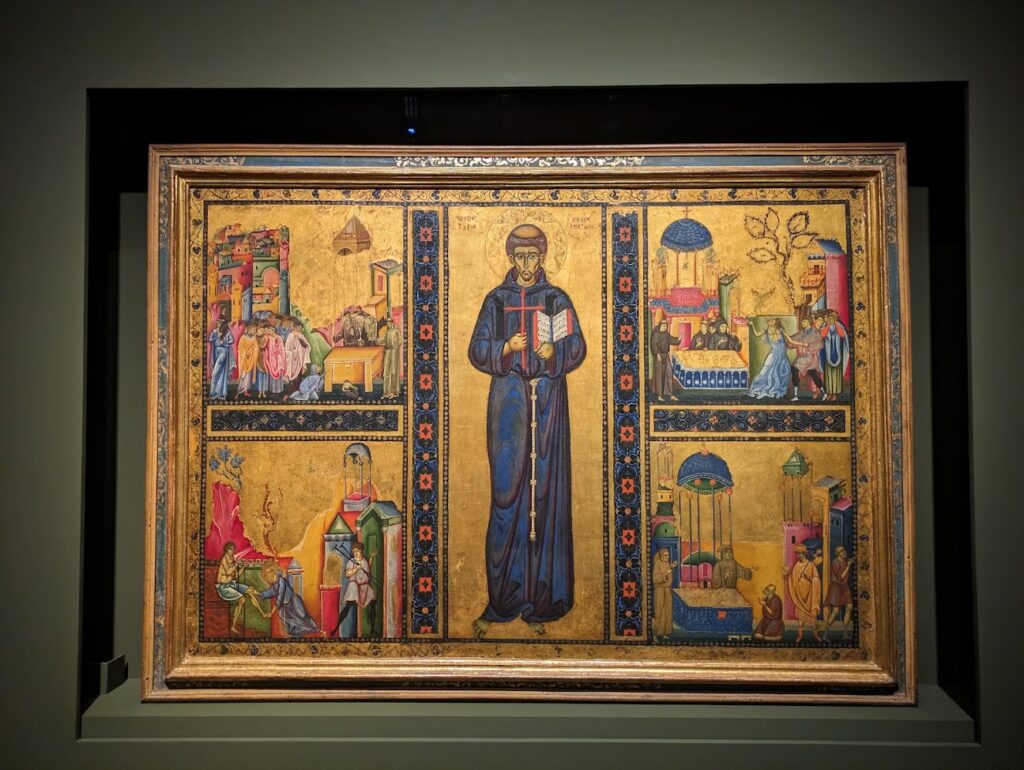
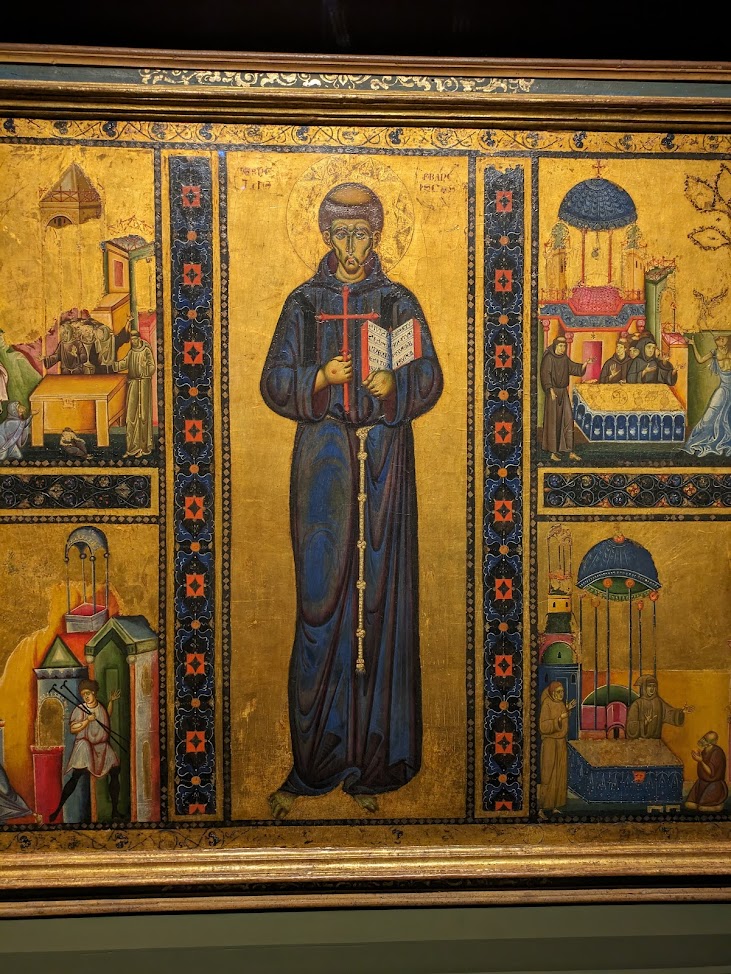
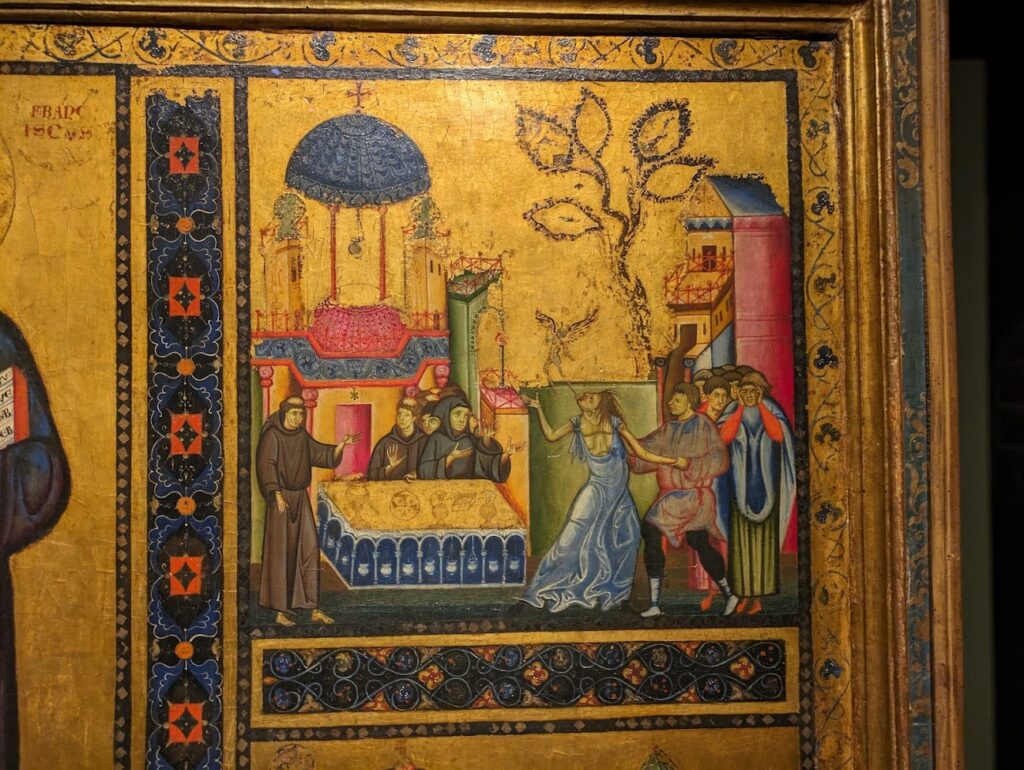
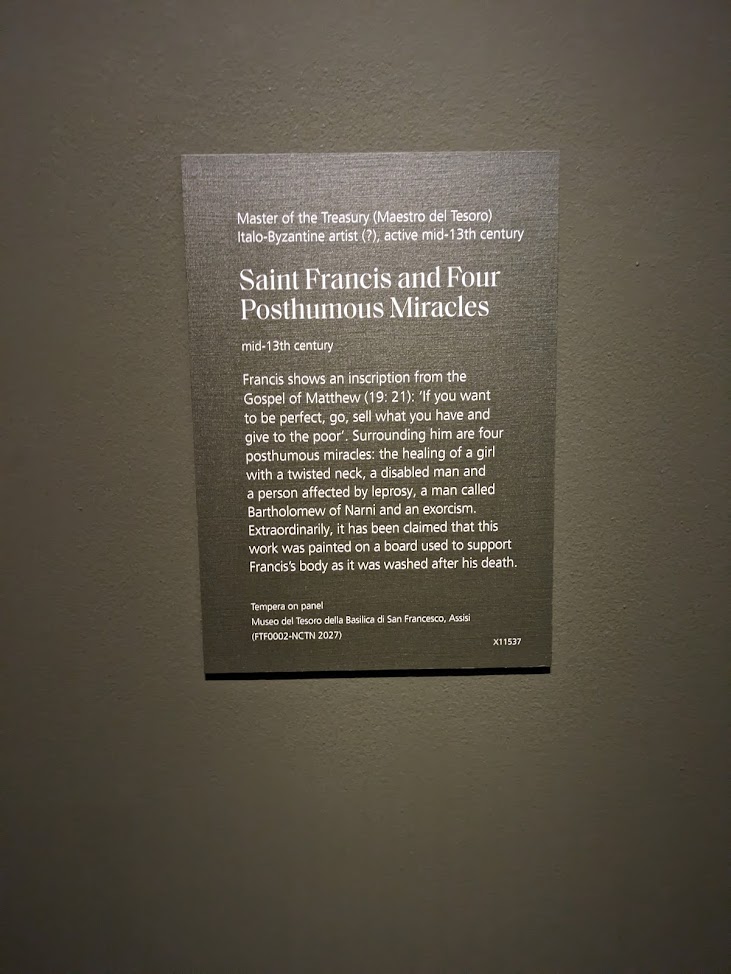
It normally resides in Assisi. The painting is heavily stylised and has a beauty derived from the decorative effect of the strong color and gold, the abstract patterns in the borders and the parabolic grace of the lines that describe form, especially in the robe of St Francis.
The iconographic stylization persisted in Italy in some regions for different reasons. First, due to the fact the some parts of Italy remained under Byzantine rule until as late as the 11th century and the painting style was passed down by tradition. Another reason is that renewed contact of Italians who were not under Byzantine rule with Byzantium occurred regularly due to trade and conquest of Byzantine lands out of Italy. This contact did refresh the iconic influence, but in ways that reflected development in the iconographic style that had occured in Byzantium itself, especially in the 9-11th century, that were not necessarily reflected in all the Byzantine provinces. To my this has look of this influence to my eye of one of the older, provincial Italo-Byzantine styles.
Finally, here is a relic – the actual habit of St Francis.
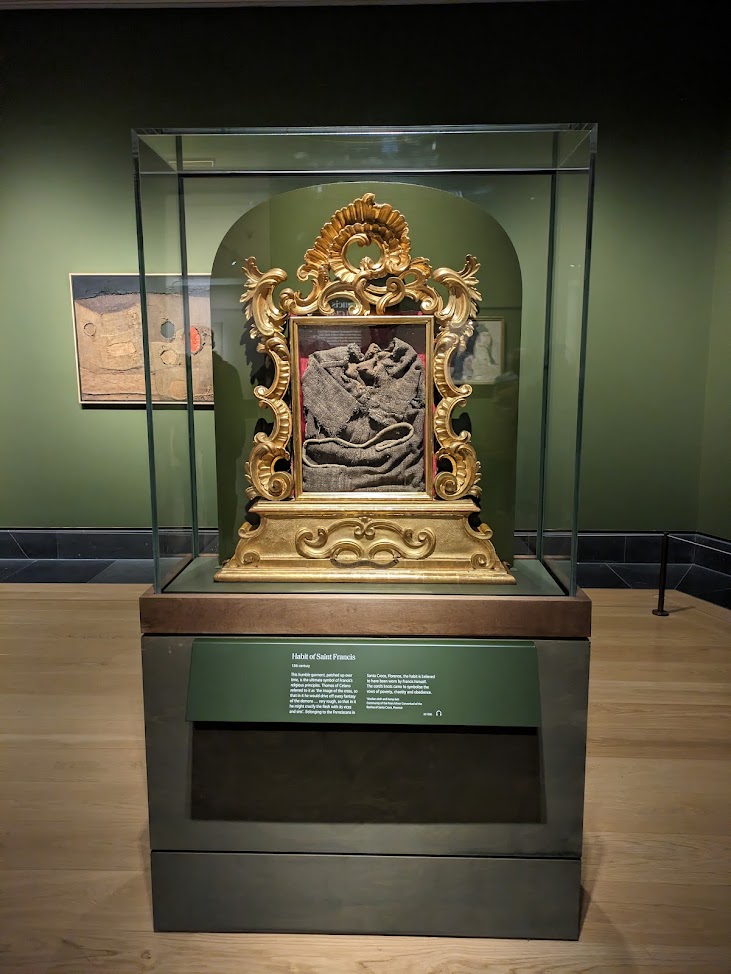
It is not unattractively presented, but as such it is not sacred art. It contributes to the faith of Catholics as a focus for prayer which is derived more by the knowledge of what it is, rather than specifically what it looks like.
This makes art that is based on the fabric of the habit a pointless exercise, it seems to me, as it has neither artistic merit and very likely no influence over the prayer of the faithful over what it is. Nevertheless this is what we see in a contemporary piece on show, see below. I am not convinced, as the pseudo-spiritual langauge of the description that accompanied the piece, that this represents the ‘heights of artistic expression’.
Visual art is as good as it looks, and this in my opinion has no beauty, no authentic meaning other than what is arbitrarily imposed on it, and no authentic religious connection. It does serve to highlight I would say, by contrast with other works in the show, the depths of the impoverishment of contemporary art in comparison with tradition! It is however, perhaps more appropriately termed a crock than a sack.
Nevertheless, I would reiterate a point I made last week about the value of such pieces appearing in the exhibition. Although critical of the art, I am nevertheless in favour of such pieces appearing in the exhibition. The National Gallery is not a church. Provided that the Christian art is properly represented, which it most certainly is in this wonderful exhibition. I feel that these modern, anti-traditional works of art, help us to focus on what a Christian ought to do and appreciate tradition even more.
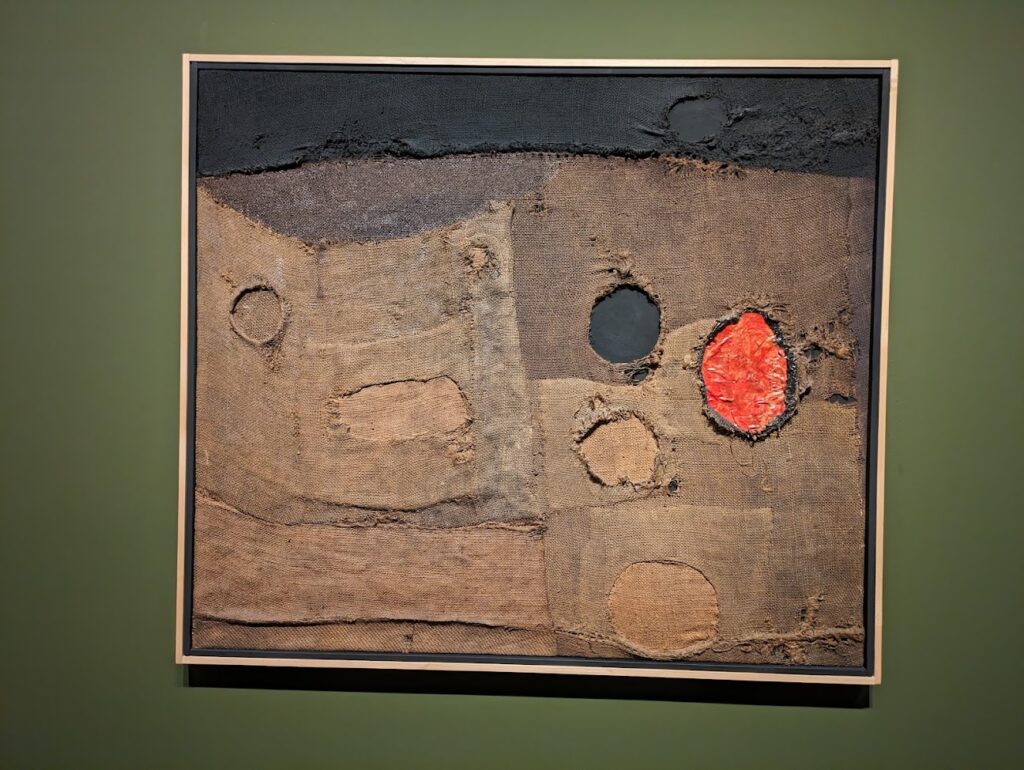
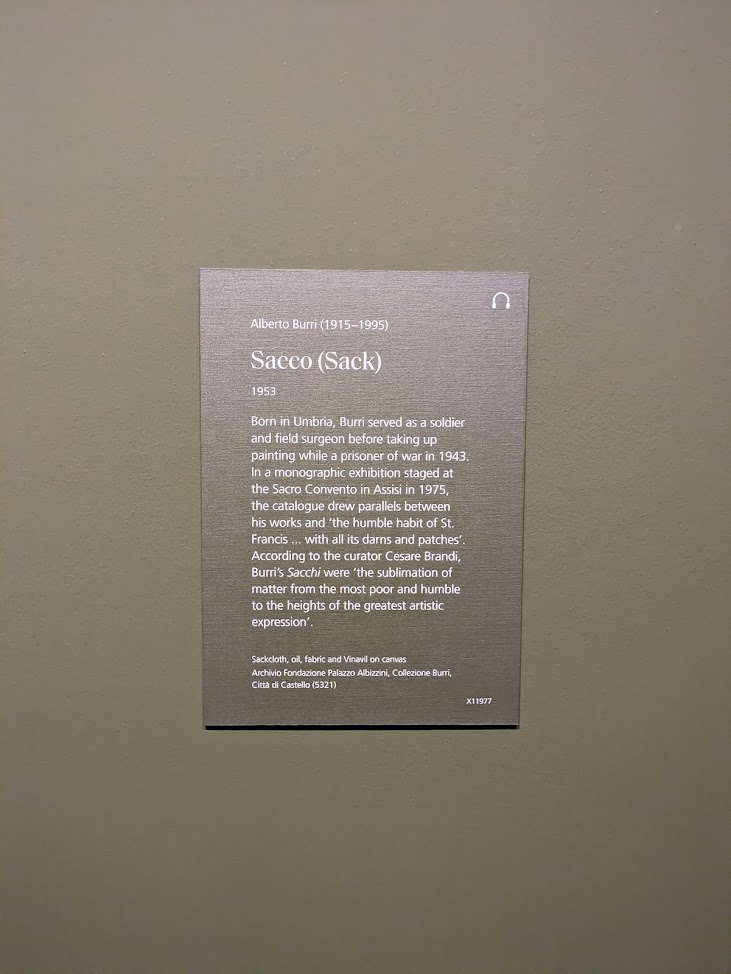
From the Alberto Burri | David Clayton | Italo-Byzantine art | St Francis of Assisi | The National Gallery of London series
View more Posts